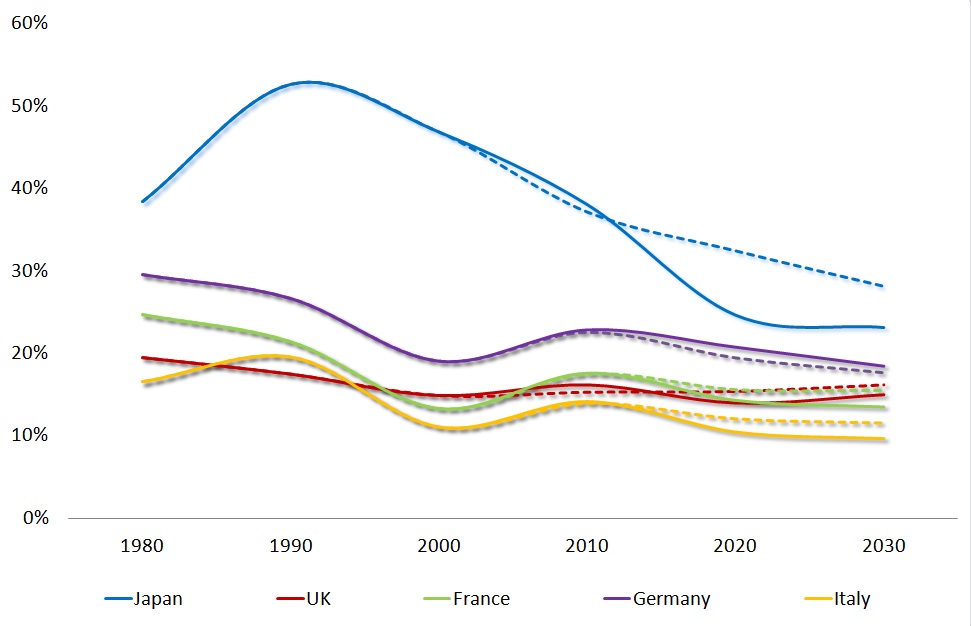According to BRIC projections, the economic power of the BRICs is on the rise. But the other side of the coin is equally interesting. Among the G6 countries, US economic power is increasing at the expense of Europe and Japan.
Recently, the 10th BRICS Summit took place in Johannesburg, South Asia. As the international focus has been on the BRIC prospects in the future, it is often forgotten that when the first BRIC reports were published in the early 2000s, they also featured projections about the likely growth of major advanced economies.
How have the leading Western economies fared in terms of those past expectations and current realities? In order to answer to that question, let’s use the largest economy, the United States, as a benchmark to compare the original BRIC analysis assumptions (dashed line) in the early 2000s with the advanced countries’ real economic development in the past two decades and the coming decade (Figure).
Figure 1: G6 Economies Relative to US Growth Performance, 1980-2030E

Sources: BRIC projections, Goldman Sachs, 2003; growth estimates, IMF; long-term growth projections, Difference Group.
Japan’s lost decades
Of the largest advanced economies, Japan’s economic agony has been the most painful one. Between 1980 and 1990, its share of the U.S. economy soared from 38% to 53%.
However, after Tokyo conceded to Washington’s demands in trade and currency disputes in the ‘80s, it was soon forced to cope with a huge asset bubble and the consequent secular stagnation.
Despite massive monetary injections, Japanese economy remains stagnant and government debt continues to soar (it’s now almost 255% of GDP).
Furthermore, the worst is still ahead in the next decade, as Japan must soon cope with a declining population.
In 2010, Japanese economy relative to the US had shrunk to a level where it had been in 1980. It is likely to decline further to 23% of the US economy by 2030 (some 5% more than the original BRIC estimate).












Leave A Comment